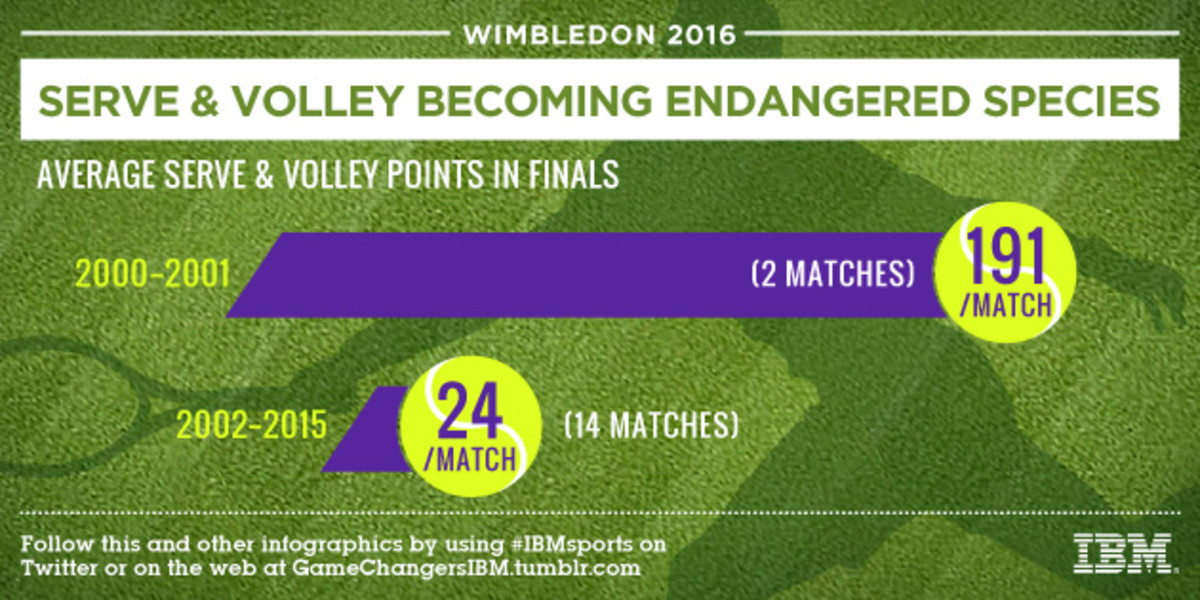Daily Data Viz: The steady decline of the serve and volley

Since 2002, when the All England Club changed the type of grass surface at Wimbledon, serve and volley has become an endangered species. To help validate this, look at the total serve and volley points played in the men’s final since 2000:

The combination of so few tournaments played on fast surfaces and the improvement in racket and string technology has made it very difficult to use serve & volley as a steady tactic. The power, angles and spin that players can generate using the new technology makes volleying extremely tough. These days serve and volley is mostly used as a surprise tactic.
Looking at 15 of the last 16 women’s finals at Wimbledon, from 2000 through 2015 (other than the 2006 final where Mauresmo and Henin played 55 serve and volley points), there were five serve and volley points played in those other 14 finals.
Novak Djokovic and Roger Federer combined to play 32 serve and volley points in last year’s men’s final—except all were played by Federer. As a comparison, 14 years earlier in the 2001 final, Ivanisevic and Rafter played 243 serve and volley points.
When Federer beat Pete Sampras in the fourth round at Wimbledon in 2001, he served and volleyed 109 times. When he won his first Wimbledon title in 2003 over Philippoussis he served and volleyed 35 times and when he won his last title here in 2012, he served and volleyed 11 times.
Players still go to the net; they just prefer to do it behind aggressive groundstrokes.
Check SI.com's Wimbledon 2016 Daily Data Viz hub page throughout the whole tournament for the latest data-driven infographics and charts from IBM, the official technology partner for Wimbledon. IBM captures and analyzes the data that powers all of the Grand Slams, as well as the digital platforms that extend the experience to fans around the world.
